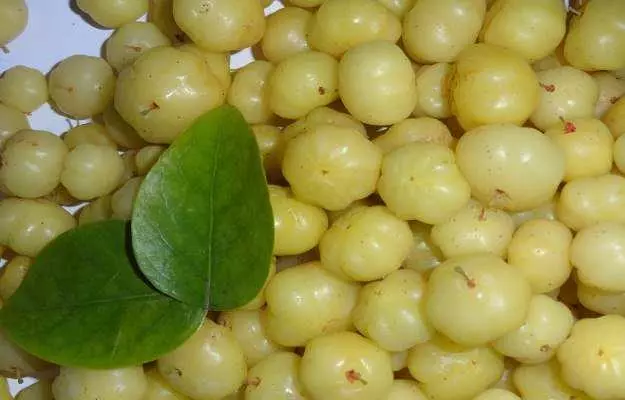Amla is a fruit belonging to the family Euphorbiaceae while murabba refers to a form of preserved food. Thus amla murabba is a preserved form of amla. The murabba of amla is usually sweetened to make it more palatable but the sugar also acts as a sort of preservative for amla by inhibiting the growth of food-borne microbes.
But why preserve it?
Well, for once, you can't get amla fruit all the year round. And then, amla is quite sour as a fruit and is not to the liking of every palate. Amla murabba, on the other hand, is sweeter and tastier but it also has all the health benefits of amla. Amla has been used in Ayurveda to restore good health and vitality. This fruit stimulates salivary glands and aids in the digestion of the food. It is usually prescribed for various health conditions like diabetes, high cholesterol, and heart problems. There are very few other sources of vitamin C as rich as amla. Interestingly, the fresh fruit of Amla contains approximately twenty times the Vitamin C in orange juice. One tiny Amla is considered equivalent to two oranges and a high vitamin content is very beneficial for the immune system of the body. In fact, Phyllanthus emblica is the scientific name for Amla which translates as “the sustainer”.
Popularly known as the “Indian Gooseberry”, it is found in the Middle East and a few Southeast Asian countries apart from India. Amla is also called Emblic, stemming from its known botanical name which is Emblica officinalis. It is a tiny tree with jagged leaves bearing plump fruits. The fruit ripens in the autumn and is found growing wild in the forests and hilly areas of the Indian subcontinent. The skin of the fruit is hard but thin with a sour and bitter taste. The flesh of the Amla is a bit astringent (dry). In the center lies a hexagonally shaped stone with 6 small seeds.
Amla murabba is highly nutritious, but its nutritional value can decrease if the murabba is not prepared with a proper methodology.
Some basic facts of Amla:
- Scientific Name of amla: Emblica officinalis
- Common: Amla, Indian gooseberry
- Native region and geographical Distribution: Amla is a native to the South Asian countries like India, Pakistan and Bangladesh. It is grown in tropical desert areas of India and is commercially produced in Northern India.
- Fun Facts: It has been woven closely into religious rituals and ceremonies of India.
During the World War II, powder and candies made from dried Amla were given to Indian Soldiers as Vitamin C supplements.
In rural India, it is believed that taking a sip of water after eating Amla, will make the water taste very sweet.





























